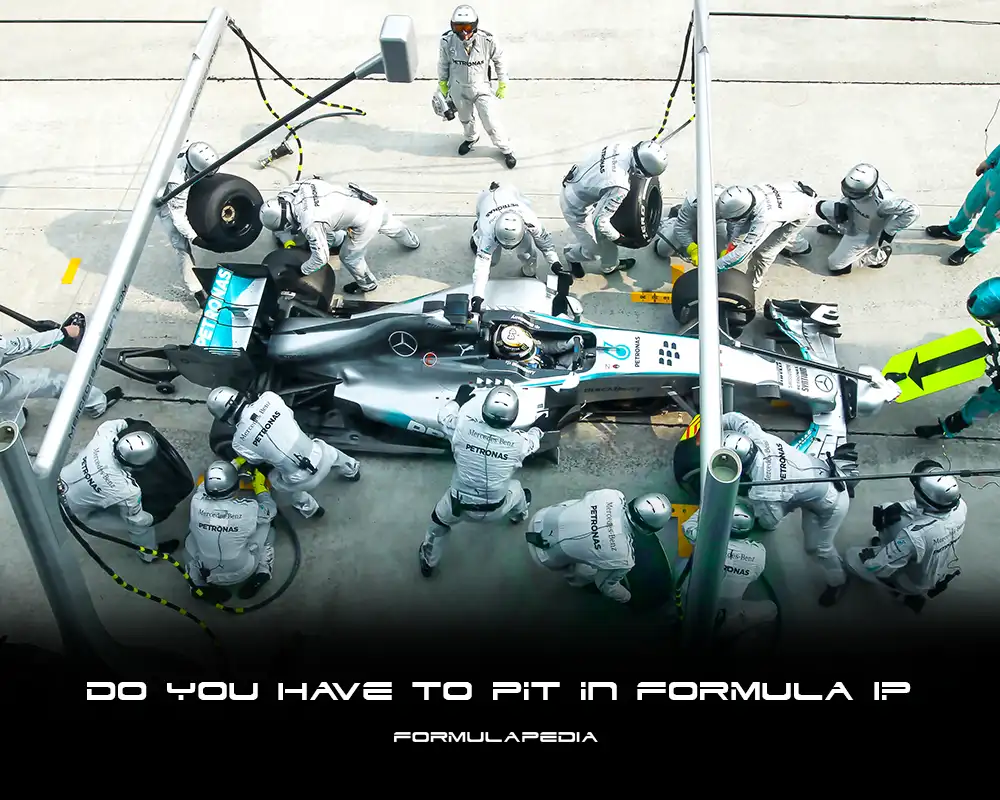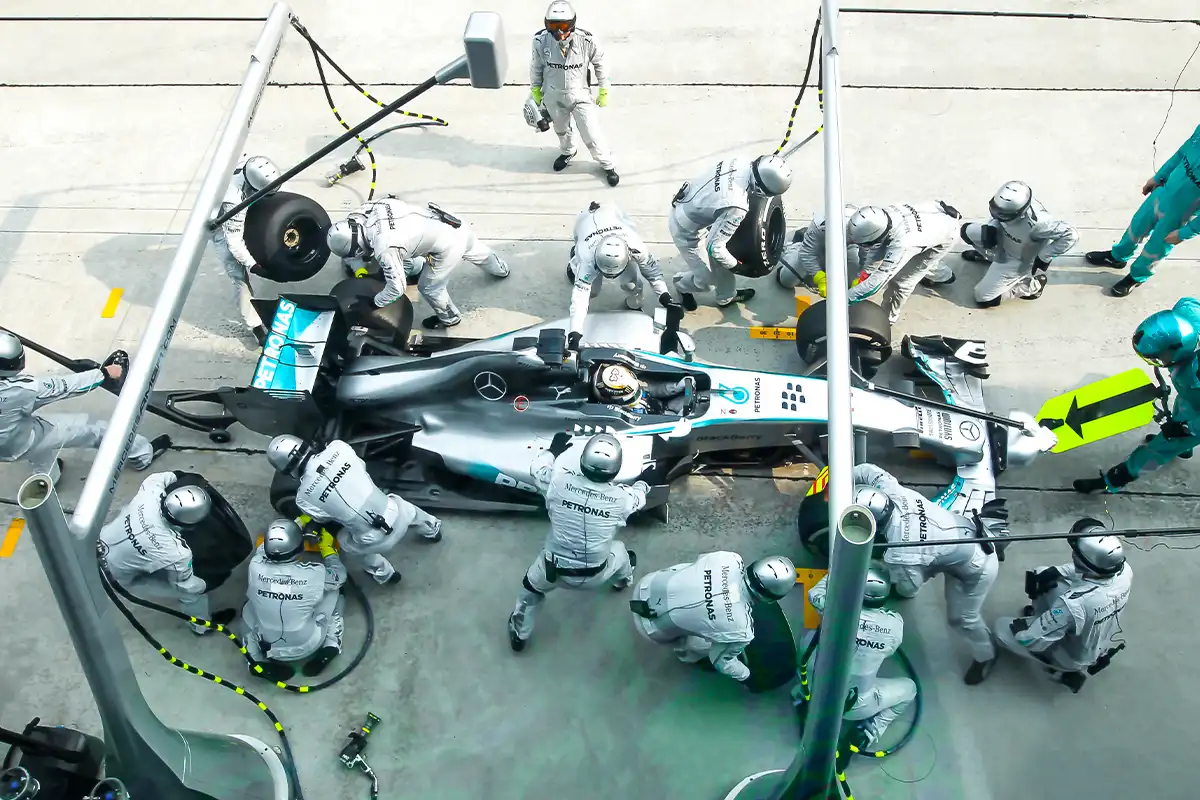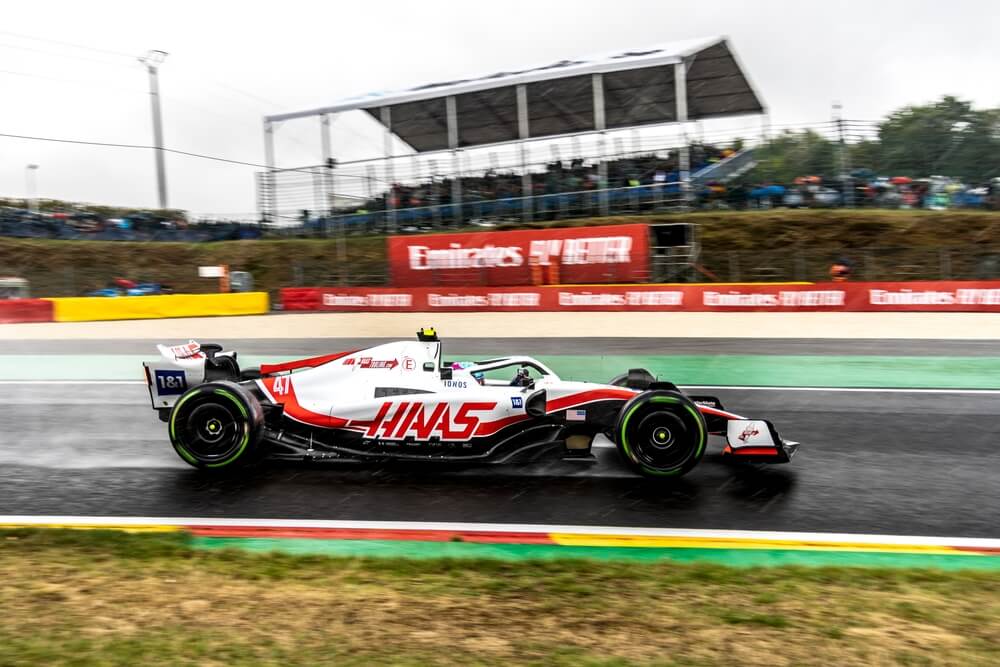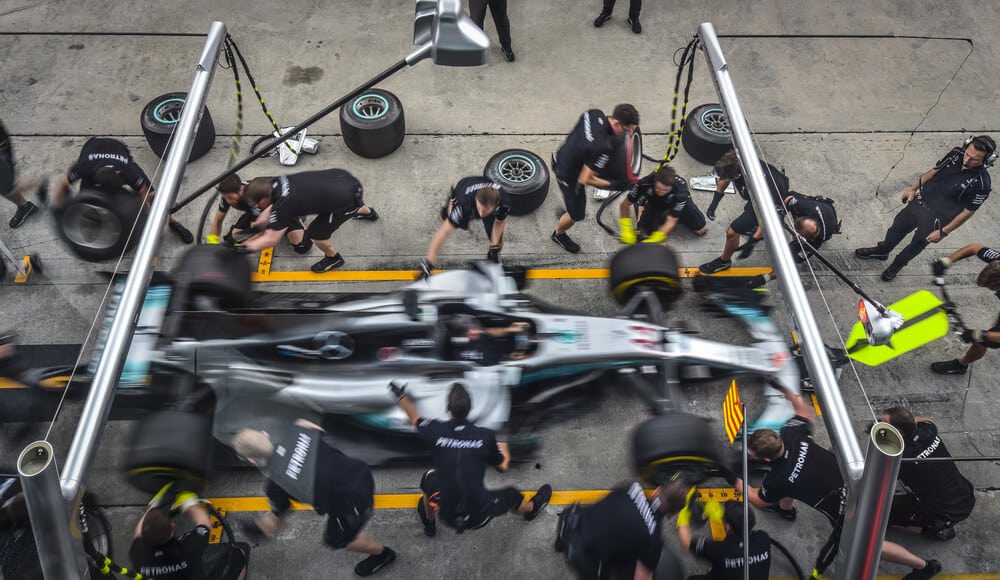Strategy is one aspect of Formula 1 that appeals to our nerdier side. It not only makes or breaks a race for a driver, but it is also one of the most important factors for us spectators, a could be the difference between a thrilling battle for the win and a complete snooze-fest.
It comes as no surprise then that Formula 1’s governing body, the FIA, is as strict about pit stops as they are about any technical regulations for the cars.
In this article you will learn about what happens if you don’t pit in F1.
Table of Contents
Watch this video to learn more about Formula 1 pit stops.
Do you have to make a pit stop in F1?
Yes, a Formula 1 driver must make at least one pit stop during a race. The modern Formula 1 tires do not last a whole race and that is one of the reasons why you have to make a pit stop. Another reason is to create excitement in the race that all teams must use.
Key takeaways
Pit stop strategy in Formula 1 can be described as a mix of science, art, and a dash of luck, so here are some pointers:
- If the race is considered dry, drivers must use at least two different tire compunds throughout the race.
- Drivers are free to pit whenever and however many times they want so long as they have sets to use.
- While there are many pit stop rules in place to ensure safety, the FIA also creates rules to make the strategy aspect more interesting.
- One example of that was in 2021, when the FIA slowed pit stops to make them safer and more equitable for teams.

Why are pit stops mandatory?
Because of the way modern Pirelli tires are built, it is nearly impossible for a driver to finish the race without pitting and doing so quickly.
However, there are numerous other reasons why pit stops are required in Formula One, including both safety and to make the racing more interesting.
The driver needs to use two different tire types
Unless they have been on a set of intermediate or wet-weather tires, each driver must use at least two distinct specifications of dry-weather tires during the race. This means that during a dry Grand Prix, drivers must use two of the three dry Pirelli compounds available.
If a driver violates this rule and completes a non-stop dry race without making their required F1 pitstop, they will be penalized.
Tire compounds describe the hardness or softness of the rubber on a specific type of tire, and they introduce a critical variable into the Formula 1 tire equation.
For dry weather conditions, drivers can select from soft, medium, or hard compounds on any given weekend. These ‘slicks’ are labeled red, yellow, and white respectively. All F1 tires are supplied by Italian manufacturer Pirelli.
The pit stop requirement involves additional strategy from the teams and drivers
Being forced to use at least two dry compunds means that teams are more likely to be on different strategies from each other, which along with the increased risk of making mistakes makes for more exciting and higher risk racing.
The main challenge with tires is to get as much road-holding performance as possible – and keep it for an extended period of time.
As a result, tires are always a trade-off between performance and endurance. The different tire compounds in Formula 1 allow teams to choose which way they want to shift this compromise.
In theory a softer tire is faster but wears out sooner, while a harder compound lasts longer but does not perform as well.
Increased safety
Another factor to consider is that, while there are three tire compounds to choose from during a Grand Prix (soft, medium, and hard), the range of those compounds can be tailored to the characteristics of the circuit.
That is why the tire manufacturer produces five dry compounds for the season. They are labeled C1 (hardes) through C5 (softest). It can then choose three of those compounds for each Grand Prix weekend.
Pirelli may decide that a harder range of tires is required due to an abrasive track and/or high temperatures. This is primarily a safety issue, with some marketing thrown in, because blowouts are dangerous and tire failures due to excessive wear do not make for good brand publicity.
Another factor to consider is that, while there are three tire compounds to choose from during a Grand Prix (soft, medium, and hard), the range of those compounds can be tailored to the characteristics of the circuit.
Do you have to make a pit stop in F1 when It rains?
If the race begins in wet conditions, or if rain falls at any point, whether on full wet tires or intermediates, drivers are not required to make their mandatory pit stop throughout the race, which means they are no longer required to use at least two tire compounds.
This is due to the possibility that the drivers will be unable to use two different dry tire compounds safely.
For example, if heavy rain continues to fall throughout the race, drivers will be forced to use extreme wet tires for the duration of the race. As a result, requiring the use of anything other than wet tires would be dangerous.
Wet tires have the ability to last the entire race in some cases, which is why there aren’t always many pit stops during a wet race, though it’s rare for a car to make it all the way to the finish.
What penalty do you get if you don’t pit in F1?
Failing to pit and use two dry compounds during a dry race results in disqualification. A time penalty would be insufficient because drivers could potentially gain more time not pitting than the penalty.
In theory, a driver could complete the race without pitting, depending on the tire compound and how well they manage their tires.
Fortunately for us spectators, the punishment means that no one will attempt it, so we won’t see anyone stumbling around Monaco seconds off pace, holding off the entire pack on 40-lap-old tires.
Read more about important rules in Formula 1.
More rules you should know about
Over the course of the weekend, each team will have access to 13 sets of dry tires, comprising two sets of hard, three sets of medium, and eight sets of soft. They also get three pairs of full wets and four sets of intermediate tires.
Teams receive a new set of inters to play with if any of the Friday practice sessions—FP1 or FP2—is wet or if it appears that the Saturday morning practice session—FP3—will be wet. However, they must return a used set before to qualifying.
Tire usage is strictly monitored through the use of a digital tagging system, which allows teams to pick up, return, and swap tires throughout the weekend.
Why do they say "Box" instead of "Pit" on the radio?
The word “box” is an interesting example of how German influence on the sport has shaped its language. Fortunately for you, we have an entire article about why they say box in Formula 1.
Frequently asked questions
How Many Pit Stops Are Normal in an F1 Race?
What Is the Longest Pit Stop In History?
What Is the Fastest Pit Stop In History?
Conclusion
Pitstops and the rules that govern them have evolved into an art form in Formula 1. From mechanics spending minutes removing each nut with standard tools to now seeing sub-2 second pitstop times achieved by highly qualified teams of mechanics, it’s safe to say that pitstop technology has kept up with the cars’ rapid evolution.
And, given their influence over how a race can play pout, the FIA has a legitimate interest in regulating things for both safety and entertainment.
So, the next time you’re on the edge of your seat because of a tire change that could upend the whole Grand Prix, you’ll know who to thank.
Article sources
- https://thesportsgrail.com/f1-pit-stop-rules-and-meaning-explained-record-crew-salary-speed-limit/
- https://pittalks.com/f1-pit-stops-rules-explained/
- https://axleaddict.com/cars/Fastest-Formula-1-Pitstops#:~:text=Max%20Verstappen%2C%20Red%20Bull%3A%201.82%20Seconds
- https://www.essentiallysports.com/f1-news-what-is-the-longest-pit-stop-in-f1-history/
- https://www.motorsport.com/f1/news/insiders-guide-what-are-f1s-tyre-rules/6885458/




